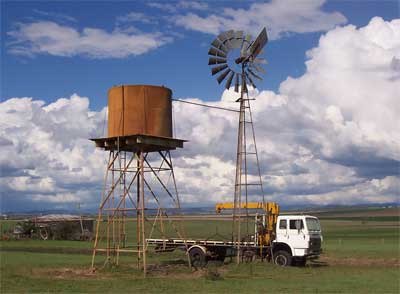The available natural resource for any site dictates the type
of system best
suited to supply the power. Globally, sites closer to the
equator will have
more sun, whereas those nearer the poles are likely to have
higher wind speeds.
If you are considering solar panels, the selected installation area needs to be
unshaded all year round, bearing in mind the low winter sun
angle and long
winter shadows.
In Europe, the solar array will need to be
facing roughly towards South, ideally with potential to tilt
the panels at an
angle of 30 to 60 degrees from the horizontal.
If you are considering a wind turbine, the area must not be surrounded by
trees or buildings. The mast needs to be as tall as possible.
A wind generator
needs a clean, smooth, laminar flow of air, as any turbulence
seriously reduces
the output.
Generating
power from solar & wind energy
is not cheap. The equipment required can be
an expensive capital outlay. Additionally, at remote sites,
the power generated
needs to be stored in batteries which are also costly.
However, for many off-grid sites, the cost of a mains
connection often makes a
stand-alone power system economically viable. Even in less
remote areas, the
costs of running mains cables can be very high, especially if
roads or car
parks have to be disrupted.
The economics of any off-grid solar or wind energy system are
directly related
to the amount of energy required. This is why high efficiency
is vital, as each
watt saved by effective sustainable Passive House design and
efficient appliances reduces cost of the system significantly.
Solar panels take more energy to manufacture than they ever produce?
Most modern solar panels have an 'energy payback' of around 3 years. Some PV technologies have an energy payback of under a year. Solar PV has a working life of over 40 years.
Wind generators take more energy to manufacture than they ever produce?







